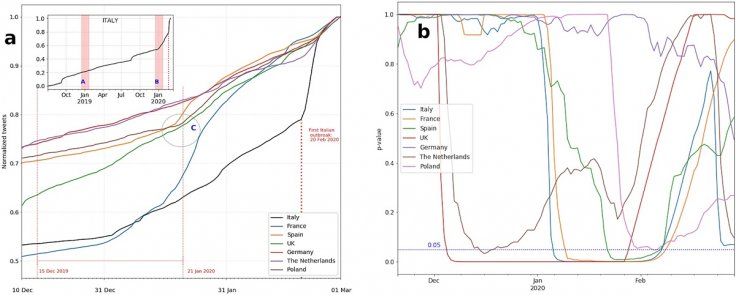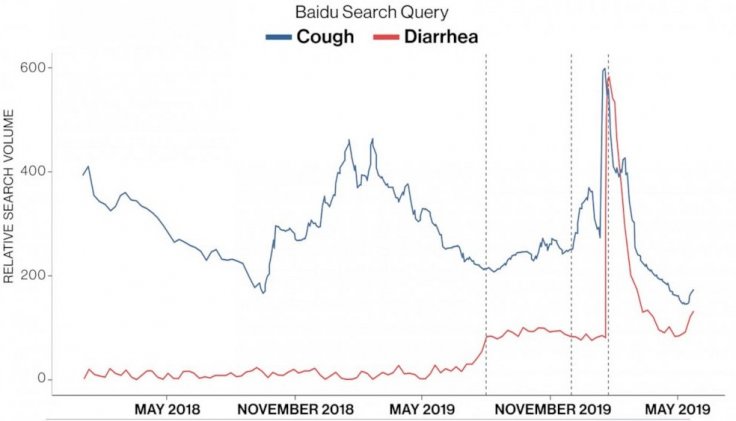Social media platforms reveal a great many things about a place, a person and even a community. Hence, in the last few years, it has become one of the most important tracking tools for the intelligence community. With novel Coronavirus origin still a mystery, scientists have applied the same tracking methodology to follow the spread of the virus across Europe.
A year on, scientists are still scrambling to come up with the answer to the origin of SARS-CoV-2. This is at a time when a team from the World Health Organization (WHO) is visiting Wuhan, where the virus first emerged and possibly made the jump from animal to human host. But with China obstructing the investigation, it has not been easy. Instead, scientists, in search of answers, have looked at Twitter.
The researchers from IMT School for Advanced Studies Lucca, Italy, found increasing posts on Twitter about pneumonia between 2019 end and 2020 beginning in seven countries which later became COVID-19 hotspots.

Tracking Twitter
The researchers created a database of 573,298 unique users and 891,195 tweets that contained the word "pneumonia" in seven European languages — English, German, French, Italian, Spanish, Polish and Dutch. They chose the word as it was the disease associated with the most severe condition in COVID-19 patients. The other reason was that the 2020 flu season was not as severe as the previous years. However, to avoid any overestimation, the scientists eliminated any link or retweets or even media coverage of the emerging health crisis.
The analysis showed a pattern. For example, before the first case of COVID-19 was detected in Italy on February 20, there was an increase in Twitter mentions of the word pneumonia in the early weeks of 2020. There was a massive surge in the number of mentions compared to the previous year. Researchers believe this shows the presence of potential COVID-19 hotspots well before the first case was identified. A similar pattern was noticed in other European countries including Spain, UK, France and Poland.

As for identifying hotspots, scientists used the geotagging data from the tweets with the keyword pneumonia. They found that places with a greater number of tweets about pneumonia later became major hotspots. Italy's Lombardia, Spain's Madrid and Île de France all soon emerged as hotspots. Keyword search for dry cough and fever and other significant symptoms associated with the disease also yielded a similar result.
The researchers said that their study showed the disease appearing in Europe much earlier than anticipated and could provide vital insight into how it spread. "By leveraging social media, these findings offer the first clear accounting of how far behind many European countries were in detecting the virus," the researchers wrote in the research paper that was published in the journal Nature.

How Can It Help?
Scientists believe that the approach can help government and local health authorities identify hotspots and devise a plan to mitigate the risks. A team from Harvard University also conducted a study based on satellite images of hospitals around Wuhan and internet search queries. They found that the virus might have been spreading as early as August 2019 in many areas close to Wuhan. While the study can not definitively say the origin of the virus, it can help show light on the spread.
"The approach here outlined shows how governments, policy-makers and local authorities can obtain important contextual geo-localized information in real-time for devising effective intervention policies throughout the whole epidemiological cycle, from the investigation and recognition phases of a pandemic up to the deceleration and preparation," the authors said.









